$210.00 – $1,300.00
The PF Redspore Strain: An Intriguing Variant of PF Classic
The potency of the PF Redspore strain is nothing to brag about, but its unique spores are enough to intrigue any mycologist. Let’s take a look at this unusual classic…
Buy PF Redspore Magic mushroom online | Order PF Redspore Magic Mushroom Online.
Buy PF Redspore Magic mushroom online. PF Redspore is an offshoot of the PF Classic Strain. This strain is identical to the classic strain in almost every way, but it’s a little more interesting to look at under a microscope. Buy PF Redspore Magic mushroom online.
Unlike PF Classic, PF Redspore mushrooms produce red-colored spores. Robert McPherson (aka “Psilocybe Fanaticus”) developed this strain during the 90s when he isolated a red-spored mutation of the PF Classic strain.
PF Redspore is just one of the 100s of different Psilocybe cubensis strains. Although similar to many other strains, PF Redspore is special in its own right. It’s incredibly easy to cultivate, capable of producing good yields over several flushes, and produces average potency shrooms. Buy PF Redspore Magic mushroom online.
The mushrooms are medium to large and have a bulbous shape when young — flattening out and becoming more saucer-shaped in maturity. Like the PF Classic strain, PF Redspore is a heavy sporulator but slow to mature — this makes collecting spores from mature mushrooms easy.
PF Redspore Specs
| Potency | Mild |
| Cultivation | Beginner |
| Species | Psilocybe cubensis |
| Substrate Recommendation | BRF (Brown Rice Flour) Cakes |
| shop | driedmagicmushroomspores.com |
History of the PF Redspore Strain
The PF Redspore strain was developed by the legendary mycologist Robert McPherson — the same person to develop the PF Classic strain and the cultivation technique known as PF-Tek. Originally, the PF Classic strain was developed to use with his groundbreaking cultivation method.
The PF Redspore strain came to be when a normal PF Classic strain mutated — producing red-colored spores — in McPherson’s lab sometime during 1996. Robert isolated the mutation and stabilized the strain before putting it on the market through his website, fanaticus.com.
In February of 2003, the DEA shut Robert McPherson’s company down — raiding his home and business place. Most of the Psilocybe Fanaticus collection was destroyed by the government, but many of the “OG” strains survived thanks to friends and fans of McPherson’s work.
Luckily, the PF Redspore strain, alongside PF Classic and PF Albino, survived the raid and is still available today for purchase from a variety of vendors across the globe.
PF Redspore Strain Potency & Psilocybin Content
PF Redspore shares the same potency as the PF Classic strain. With average potency, this strain is capable of producing total tryptamine levels somewhere in the region of 0.50% to 0.90% — usually on the lower end of this spectrum.
Although PF Redspore is yet to be submitted into the Psilocybin Cup, one PF Classic sample has been entered over the past four competitions.
The PF Classic sample entered into the 2022 Spring Cup — grown by the cultivator “Holistic Health Bay Area” — produced 0.60% psilocybin and 0.09% psilocin.
Although PF Redspore mushrooms aren’t particularly potent, they will induce a strong psychedelic trip at higher doses. These milder mushrooms also have their uses for microdosers and those wishing to consume threshold doses without becoming too impaired.
Milder mushrooms are also a great place for beginners to start because they provide a bit more control over dosage — even without accurate measuring scales.
Where to Buy PF Redspore Spore Samples | Buy PF Redspore Magic mushroom online.
We sell magic mushrooms as well as medicinal and gourmet mushroom spores.
This company ships worldwide and offer an enticing insurance policy for orders that are blocked at the border.
If your order is stopped for any reason, We will ship another identical order free of charge.
PF Redspore’s Variations & Genetic Relatives
PF Redspore has a couple of genetic variants. These close relatives are similar in almost every way — they share similar growth characteristics and potency. However, they differ slightly in appearance.
Here are PF Redspore’s genetic relatives:
1. PF Classic
PF Classic is the original “Psilocybe fanaticus” strain. It was developed by Robert McPherson back in the late 1980s. The spores were sold on his website “fanaticus.com” from 1991 until the DEA eventually shut the business down in 2003.
The PF Classic strain was created for use with Robert’s PF-Tek cultivation method. However, it can be grown using most techniques and substrates fit for Psilocybe cubensis cultivation.
PF Classic and the Redspore variant are identical in every way except the color of the spores. Side by side, the two mushrooms are difficult to tell apart — a decent spore print and a microscope are needed to distinguish the two.
Like the Redspore variant, PF Classic produces tryptamine levels in the region of 0.50% to 0.90%.
2. PF Albino
PF Albino is a non-pigmented version of the PF Classic strain. It’s identical in almost every way — producing similar mushroom shapes and sizes as well as potency. However, the fruits of the Albino variant are completely colorless.
Colonization times are significantly slower, yields are slightly lower, and aborts are more common with the PF Albino strain compared to the Classic and Redspore variants.
This is a true albino strain rather than leucistic (a strain with a lack of pigment) because the spores themselves are also white. This strain can be difficult for beginner growers with a lack of cultivation knowledge. However, for the experienced cultivator, it can be a rewarding strain to experiment with.
How to Grow PF Redspore Mushrooms
Psilocybe cubensis mushrooms are easy to grow compared to other species of psychedelic mushrooms. However, some strains are easier than others to cultivate at home.
Related: List of Psilocybin Mushroom Species
PF Redspore is a relatively easy strain to grow, even for beginners with limited knowledge of the cultivation process. The “PF” series of strains were essentially developed by Robert McPherson for use with his legendary PF-Tek cultivation method.
The best way to cultivate PF Redspore mushrooms is to use PF-Tek. This simple technique involves some basic equipment, knowledge, and procedures that can be grasped easily.
Here’s a quick rundown of the process:
Step #1: Preparing the Substrate
The first step in growing PF Redspore mushrooms is to prepare the substrate. This strain will grow on pretty much any substrate, but it does particularly well on BRF — a mixture of brown rice flour, water, and vermiculite.
A series of mason jars are filled with the BRF substrate before being placed in a pressure cooker for 30 minutes — this completely sterilizes the jars and growing medium inside. The jars are then cooled in the cooker for two to three hours before the next step.
Step #2: Inoculating the Substrate
Once the jars have cooled, they can be inoculated with PF Redspore spores using a sterile syringe — these can be purchased from The Spore Works.
It’s vital that the environment and all pieces of equipment used in the step are sterilized to the best of your abilities. Everything should be disinfected with isopropyl alcohol, and the needle should be heated with a flame before inoculation.
Using the sterilized needle, 2 CCs of the spore solution is injected into the substrate in each jar. The jars are then sealed and covered with aluminum foil before moving on to the next step.
Step #3: Incubating the Jars
Once the jars have been inoculated, they must be incubated to allow the mycelium to form.
They should be placed in an incubator at a temperature between 20 to 28 ºC (68 to 82 ºF) for two to three weeks until the substrate inside is completely white with mycelium.
Step #4: Fruiting the Mycelium
Once the substrate has completely colonized with mycelium, they’re ready for fruiting. The mycelium cakes inside the jars are removed and placed inside a simple fruiting chamber at a temperature of between 10 to 20 ºC (50 to 68 ºF).
After three to four days, the mycelium cakes will begin to fruit. At first, small mushrooms (pinheads) will appear — these will mature into full-size mushrooms over the next week. The mushrooms can be harvested as they mature but before they sporulate — this is easy with the PF Redspore Strain because even once the veil breaks, sporulation is delayed by a day or two.
Step #5: Drying and Storage
PF Redspore mushrooms mature at different times over several flushes. They’ll stay fresh in the refrigerator for around two weeks, but if you want them to last longer, they should be dried.
Drying is simple. You can dry these mushrooms on a piece of paper in a well-ventilated area out of direct sunlight. It will take a few days for them to completely dry this way. Alternatively, the mushrooms can be dried in less than 24 hours in a dehydrator at a low temperature.
Once completely dry — cleanly snapping with an audible crack — they can be stored in airtight jars with a couple of packets of food-safe silica gel. The silica will ensure that any remaining moisture is extracted from the shrooms, providing a longer shelf life.
This was just a brief overview of how to cultivate PF Redspore shrooms. There’s not enough information above for you to go ahead and get your first grow on the go. However, we do have an in-depth, step-by-step guide to the process in this article: How to Grow Magic Mushrooms.
Other Psilocybe cubensis Strains With Unusual-Colored Spores
Most Psilocybe cubensis spores are dark purple (almost black) in color. PF Redspores are characterized by their unique spore pigmentation — but they aren’t the only ones with this unique quality.
For growers interested in microscopy, we recommend checking out some of the following strains to check out as well.
1. The Colombian Rust Strain
The Colombian Rust strain produces a rust-colored spore print. Rather than producing the typical purple-black spores associated with Psilocybe cubensis mushrooms, Colombian Rust mushrooms produce spores with a reddish-brown hue.
This strain has above-average potency — producing total tryptamine levels in the range of 0.90% – 1.80%. Although potent, the effects of this shroom are inherently peaceful and relaxing — great for those that experience anxiety during a magic mushroom come-up.
Colombian Rust is an easy strain for the beginner to cultivate thanks to its contamination resistance and ability to adapt to temperature fluctuations.
2. The Penis Envy Uncut Redspore Strain
The Penis Envy Uncut Redspore strain (that’s a mouthful) is a rare variant of the Penis Envy Uncut strain. Spore samples can be difficult to find online and hard to extract from the mushrooms due to the mostly closed veils in mature mushrooms. However, those that find the strain will be rewarded with potent cubes that produce red-colored spore prints.
This strain carries the same phallic shape, sealed veil, and otherworldly potency as other strains in the Penis Envy series. The average psilocybin and psilocin content of these shrooms is around 1.36% and 0.68%, respectively.
3. The Golden Halo Strain
The Golden Halo strain — as the name suggests — produces a spore print that looks like a “golden halo.” This strain is growing in popularity for its ease of growth and beautiful spores. Golden Halo mushrooms produce vivid golden-yellow spores.
Golden Halo shrooms are medium to large in size and are averagely potent — producing total tryptamine levels between 0.50% and 0.90%.
The strain is relatively easy to grow, but certain batches of spores can be a little unstable depending on where they’re sourced from.
4. The Jack Frost Strain
The Jack Frost strain is a true Albino that produces spores that completely lack pigment. Under a microscope, these spores look translucent with a white hue. This is a hybrid of the True Albino Teacher and Albino Penis Envy mushroom strains.
Regardless of its heritage, the Jack Frost strain isn’t particularly potent (at least not in the sense that other Penis Envy strains are). You can expect psilocybin levels around 0.70% and psilocin contents around 0.03%.
Jack Frost shrooms are surprisingly easy to grow for an albino genetic. Even the complete beginner can see good results through cultivation with these spores.
Frequently Asked Questions
1. What Color Are Psilocybe cubensis Spores?
80% to 90% of Psilocybe cubensis spores are purple-black in color. However, there are a few strains that carry a red or gold hue — this can be seen under a microscope and in spore prints.
Albino varieties of Psilocybe cubensis may also produce spores that completely lack pigment or carry a white or gray coloration — again, this can be seen under a microscope and sometimes in spore prints made over a dark surface.
2. How Many Spores Does a Single P.cubensis Mushroom Produce?
A single Psilocybe cubensis mushroom is capable of producing well over 1000 individual spores.
It’s hard to put an exact figure on the number of spores a single mushroom produces because the production can vary greatly depending on factors such as the size and strain of the mushroom as well as the environment it’s grown in, and its level of maturity.
Counting the exact number of spores an individual mushroom produces is definitely not a practical task. Psilocybe cubensis spores are microscopic and typically become airborne when the mushrooms sporulate.
3. What Do Psilocybe cubensis Spores Look Like Under a Microscope?
Under a microscope, Psilocybe cubensis spores appear as small, elongated, oval structures. Typically, they appear smooth or slightly textured and carry a dark purple coloration. However, the colors of a P.cubensis spore can range from back to purple, brown to red, or yellow to gold.
The shape of P.cubensis spores is consistent from strain to strain, but texture and color can vary quite significantly.
Without a microscope, it’s impossible to identify the texture and structure of a Psilocybe cubensis spore because the naked eye is unable to see the microscopic spores. However, by taking a spore print, one can usually identify the general color of the spores.
A spore print is taken by placing the cap of the mushroom on a piece of paper or glass until the gills open and release their spores. The collection of spores creates a pattern on the surface below that can be observed — this is often done to aid in the identification of a species or variant of an individual species — P.cubensis, for example.
4. Why Do Mushrooms Produce Spores?
Mushrooms produce spores as part of their reproductive cycle. Spores are essentially the “seeds” of the fugal world — they allow the mushrooms to reproduce and disperse their species to new locations through animal, air, or water transportation.
When two viable spores from the same mushroom species meet, they fuse together and form a structural network known as mycelium. The mycelium then develops, spreads, and eventually forms new fruiting bodies (mushrooms) that continue the cycle by producing new spores.
Spores from two different strains from a single species — for example, Penis Envy and B+ of Psilocybe cubensis — can meet, fuse, and reproduce. This results in new mushrooms with traits from both variants. In the example mentioned above, a Penis Envy spore and a B+ spore created a strain known as Tidal Wave — a super-potent variety of P.cubensis.
| Quantity | Ounce, 1/4 Pound, 1/2 Pound, Pound |
|---|
Be the first to review “Buy PF Redspore Magic mushroom online.” Cancel reply
Related products
Mushroom
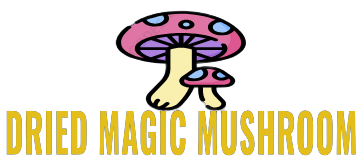
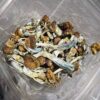
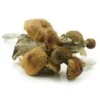
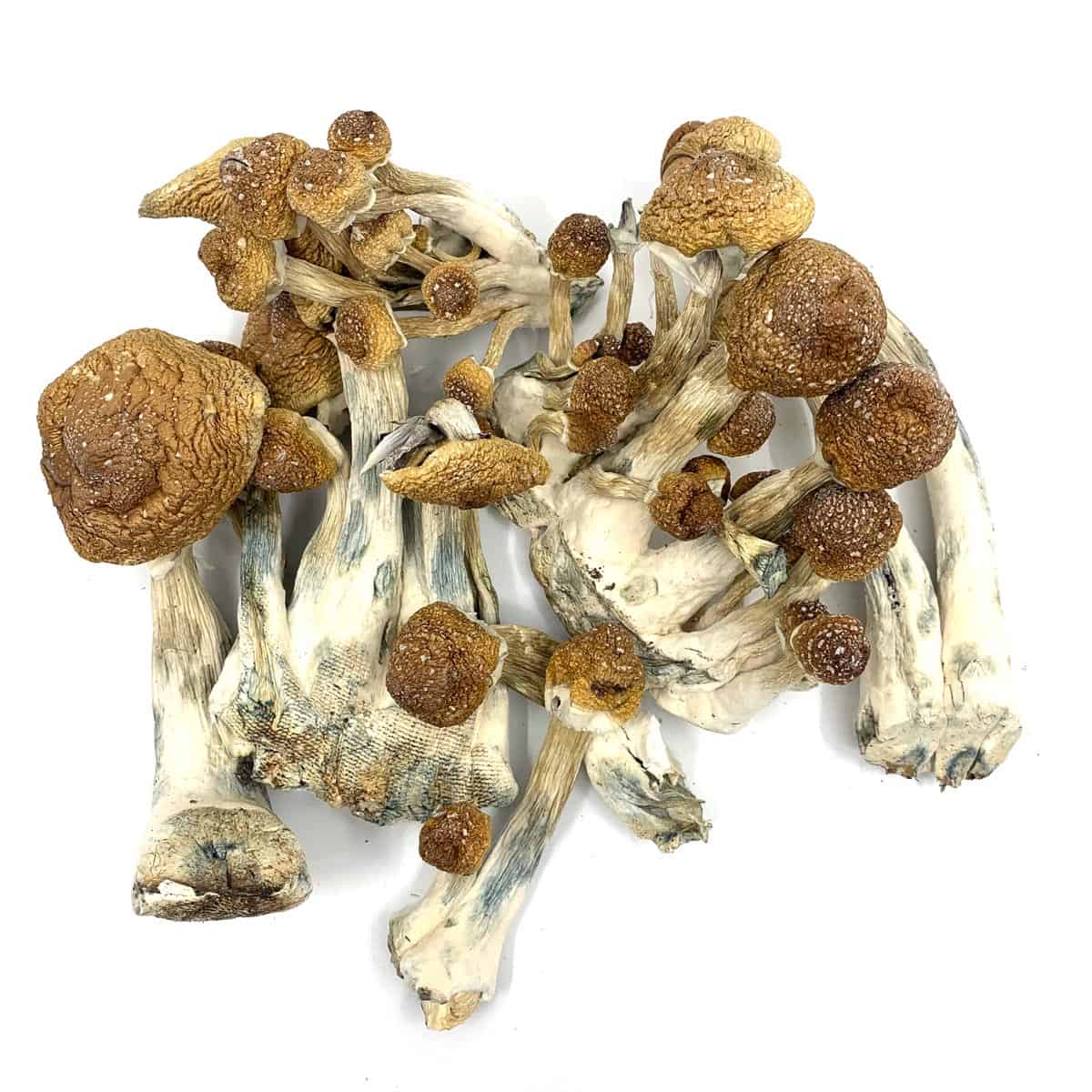

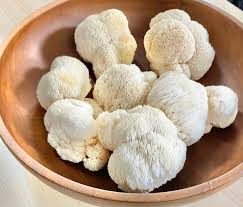
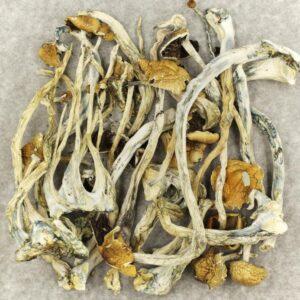
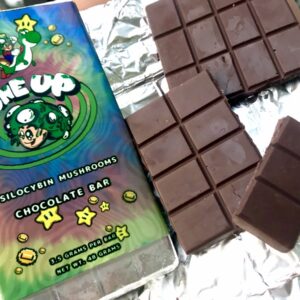
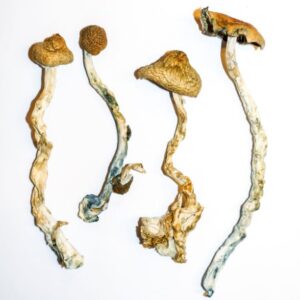
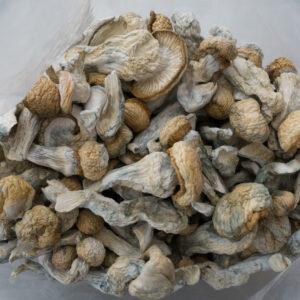

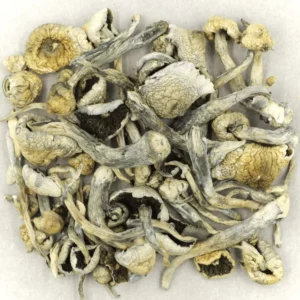
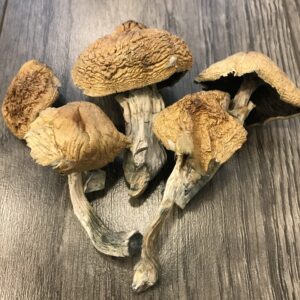
Reviews
There are no reviews yet.